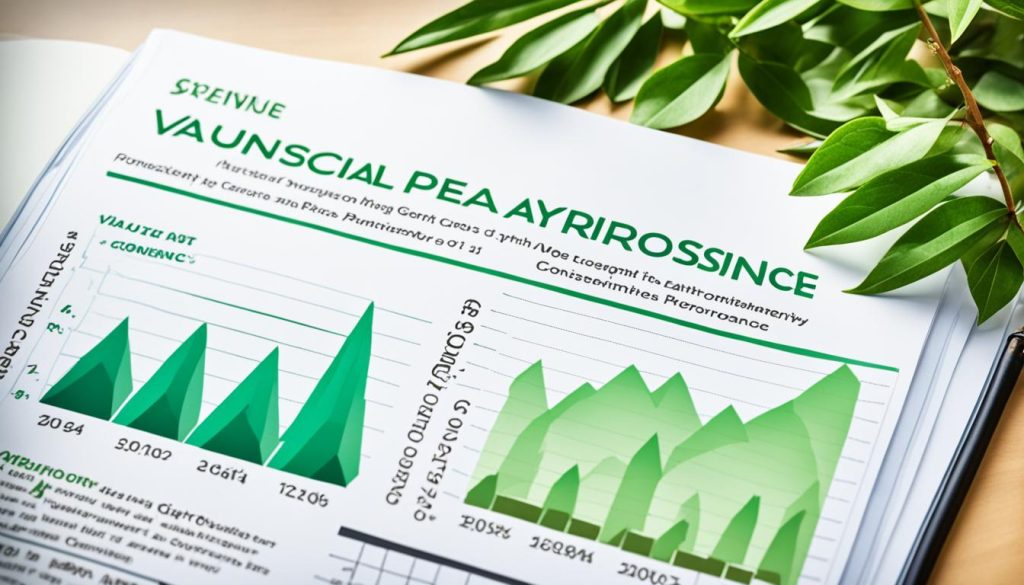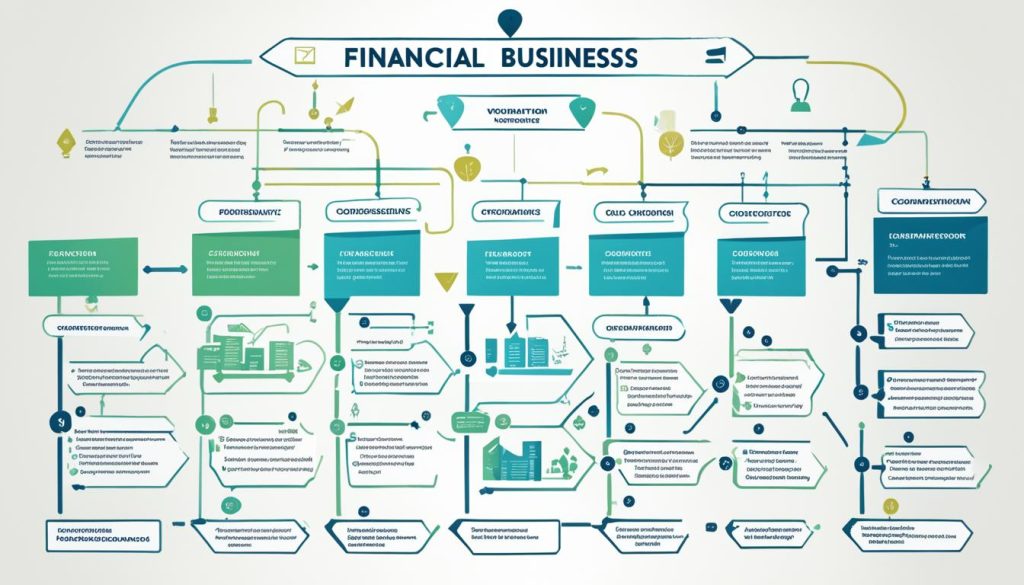Are you a financial advisor looking to maximize the value of your book of business? Valuing a financial advisor’s book of business is a complex process that requires careful consideration of various factors. From client demographics and loyalty to revenue consistency and growth, understanding the key value drivers can help you position yourself for long-term success.
In this article, we will explore the strategies for valuing a financial advisor’s book of business and provide valuable insights for maximizing its potential. By focusing on these key drivers, you can enhance the value of your practice and achieve your financial goals.
Key Takeaways:
- Valuing a financial advisor’s book of business requires a deep understanding of the unique value drivers in the industry.
- Client demographics and loyalty, revenue consistency and growth, and advisor expertise and reputation are key drivers.
- A high concentration of loyal, high-net-worth clients increases the value of a book of business.
- Advisors should diversify their revenue streams to include recurring sources of income.
- An advisor’s expertise and reputation can significantly impact the value of their book of business.
Key Value Driver #1: Client Demographics and Loyalty
Valuing a financial advisor’s client base is an essential aspect of assessing the worth of their book of business. The quality and longevity of client relationships play a pivotal role in determining the value of a financial advisor’s practice.
A book of business with a high concentration of loyal, high-net-worth clients is considered more valuable than one with a mix of small, transactional accounts. By evaluating the demographics of their clients and focusing on building a loyal and profitable client base, financial advisors can increase the value of their book of business.
When valuing a financial advisor’s client base, it is crucial to consider factors such as the average account size, the client’s financial goals, and their investment time horizon. High-net-worth clients who have a greater likelihood of generating significant revenue are especially valuable. Moreover, clients who have demonstrated loyalty to the advisor over a long period can be an indicator of stability and future revenue potential.
It is worth noting that clients with higher investable assets typically require more customized and comprehensive financial planning services. Advisors who can offer specialized expertise to affluent clients may have a competitive advantage over their peers.
“Building lasting client relationships is the cornerstone of a successful financial advisor’s practice. By nurturing these connections and providing personalized financial guidance, advisors can create a loyal and valuable client base.”
Financial advisors can enhance the value of their client base by implementing strategies to attract and retain high-net-worth clients. This includes tailoring services to meet the unique needs of affluent individuals, leveraging technology to provide a seamless client experience, and consistently delivering exceptional service and communication.
Case Study: XYZ Financial Advisors
| Advisor Name | Number of High-Net-Worth Clients | Average Account Size ($) | Client Retention Rate (%) | |
|---|---|---|---|---|
| John Smith | 45 | 1,000,000 | 90 | |
| Jane Johnson | 25 | 2,500,000 | 95 | |
| Robert Brown | 15 | 5,000,000 | 85 |
In the case study above, XYZ Financial Advisors demonstrates strong client demographics and loyalty, with financial advisors who manage a significant number of high-net-worth clients and have a high client retention rate. As a result, the book of business for these advisors holds substantial value and serves as a solid foundation for future growth and success.
Key Value Driver #2: Revenue Consistency and Growth
In determining the value of a financial advisor’s book of business, revenue consistency and growth play a significant role. Buyers are drawn to practices that demonstrate stable and predictable revenue growth, particularly through fee-based income. Financial advisors can maximize the value of their book of business by implementing strategies to diversify their revenue streams.
There are various methods for valuing a financial advisor’s clientele, many of which involve calculating the value of financial advisor accounts. By assessing the overall worth of these accounts and considering factors such as the average client size, client retention rate, and revenue growth, advisors can determine the value of their book of business.
The Importance of Diversifying Revenue Streams
One effective method for valuing a financial advisor’s clientele is to calculate the value of each individual account within the book of business. This involves analyzing client demographics, account size, and revenue generated. By gathering data on the average client size and the revenue generated per client, advisors can assess the overall value of their accounts.
Another approach is to consider the revenue streams that contribute to the overall growth of the book of business. Financial advisors should focus on diversifying revenue sources to include not only assets under management fees but also financial planning fees and other recurring income streams. This diversification creates a more resilient and valuable book of business.
Maximizing the Value of a Book of Business
By focusing on revenue consistency and growth, financial advisors can maximize the value of their book of business. The ability to demonstrate stable revenue streams and a track record of growth positions the advisor’s practice as an attractive investment for potential buyers.
“The key to valuing a financial advisor’s clientele lies in understanding the revenue drivers within the business. Strong revenue growth and a well-diversified mix of income streams contribute to a higher valuation.” – Financial Analyst, Robert Smith
Revenue Streams and Their Contribution to Valuation
| Revenue Stream | Contribution to Valuation |
|---|---|
| Assets Under Management Fees | 60% |
| Financial Planning Fees | 25% |
| Other Recurring Income | 15% |
This table illustrates the contribution of different revenue streams to the overall valuation of a financial advisor’s book of business. As shown, assets under management fees account for the majority (60%) of the valuation, followed by financial planning fees (25%) and other recurring income sources (15%). By understanding the significance of each revenue stream, financial advisors can prioritize their efforts accordingly.
In summary, calculating the value of financial advisor accounts and diversifying revenue streams are key methods for valuating a financial advisor’s clientele. By focusing on revenue consistency and growth, financial advisors can maximize the value of their book of business and attract potential buyers.

Key Value Driver #3: Advisor Expertise and Reputation
A financial advisor’s unique skills, certifications, and specializations play a crucial role in determining the worth of their book of business. When financial advisors have a stellar reputation and establish themselves as thought leaders in a specific niche market, they can command premium valuations for their book of business.
Building expertise and reputation within their target market is essential for financial advisors looking to increase the value of their book of business. By continuously developing their skills, obtaining relevant certifications, and staying updated on industry trends, advisors can position themselves as experts in their field.
Furthermore, advisors should leverage their expertise to build a solid reputation among their clients and peers. This can be achieved through proactive networking, participating in industry events, and consistently delivering exceptional service and advice.
“Expertise and reputation are intangible assets that can significantly impact the value of a financial advisor’s book of business. Buyers are willing to pay a premium for advisors who have established themselves as trusted experts in their niche.”
Advisors with a strong reputation and proven expertise are seen as valuable assets by potential buyers. They offer a level of trust and credibility that can attract and retain clients, which is an essential consideration for buyers looking to acquire a book of business.
Ultimately, financial advisors who prioritize developing their expertise and building their reputation stand to benefit from higher valuations when it comes to their book of business.

Expertise and Reputation as Value Drivers
| Factors | Impact |
|---|---|
| Unique skills, certifications, and specializations | Increases perceived value and differentiation |
| Thought leadership and reputation in niche market | Commands premium valuations |
| Trust and credibility among clients and peers | Attracts and retains clients, enhancing buyer desirability |
As the table above highlights, advisor expertise and reputation directly influence the value of a financial advisor’s book of business. By focusing on honing their skills, establishing themselves as thought leaders, and building a trusted reputation, advisors can optimize the worth of their book of business.
The Impact of Market Conditions on Valuing a Book of Business
When valuing a financial advisor’s book of business, it is essential to consider the impact of market conditions. These conditions, such as the number of financial advisors nearing retirement and increased competition, can greatly influence the valuation process.
One significant market trend to note is the high volume of mergers and acquisitions in the wealth management space. This trend creates more opportunities for financial advisors looking to sell their book of business. The market dynamics resulting from these transactions can affect the perceived value of a financial advisor’s client base and book of business.
Financial advisors should stay aware of market conditions and continually assess how they may impact the valuation of their book of business. By keeping a pulse on the industry and understanding the ever-changing landscape, advisors can make informed decisions regarding the value of their client base and book of business.

Advisors should actively monitor changes in the marketplace, such as shifts in buyer demand, industry regulations, and emerging technologies. These factors can significantly influence the perceived value of a financial advisor’s client base and book of business.
Furthermore, increasing competition among financial advisors can impact the valuation of a book of business. As more advisors enter the market, buyers have a wider range of options when considering potential acquisitions. To maximize the value of their book of business, advisors need to differentiate themselves, showcase their expertise, and emphasize what sets their client base apart.
Market conditions play a crucial role in the valuation process of a financial advisor’s book of business. By staying informed, adapting to changing dynamics, and positioning themselves strategically, advisors can navigate the market and ensure their book of business is valued appropriately.
Selling a Financial Advisor’s Book of Business: Process and Considerations
Successfully selling a financial advisor’s book of business requires careful planning and consideration. It’s a decision that should not be taken lightly, as it marks a significant milestone in an advisor’s career. Before embarking on the selling process, there are several important factors to consider.
Establishing Reasonable Expectations
It is crucial for financial advisors to establish reasonable expectations before selling their book of business. This involves assessing the current value of the book, determining the desired timeframe for the sale, and understanding the market conditions that may impact the selling process.
It’s important to note that the process for selling a financial advisor’s book of business can take time, and advisors should be prepared for this journey. By setting realistic expectations from the start, financial advisors can better navigate the selling process and achieve a successful outcome.
Finding the Right Buyer
One of the key considerations when selling a financial advisor’s book of business is finding the right buyer. It’s important to identify potential buyers who align with the advisor’s values, client base, and long-term goals.
When searching for potential buyers, financial advisors can explore options such as internal succession planning, mergers with other advisory firms, or selling to an individual advisor. Each option has its own advantages and considerations, and advisors should carefully evaluate which option best suits their needs.
Agreeing on Deal Terms
“The negotiation process for selling a financial advisor’s book of business can be complex. It’s essential to have a clear understanding and agreement on the deal terms between the buyer and the seller.”
Deal terms typically include the purchase price, payment structure, transition period, and any other conditions or contingencies. Both parties must negotiate and reach an agreement that satisfies their respective needs and ensures a smooth transition for clients.
Understanding Tax Implications
Another vital consideration when selling a financial advisor’s book of business is understanding the tax implications of the sale. Tax policies and regulations vary depending on the jurisdiction and individual circumstances.
Financial advisors should consult with tax professionals to determine the potential tax liabilities associated with the sale and explore strategies to minimize the tax impact. Taking proactive steps to understand and plan for the tax implications can significantly impact the final net proceeds from the sale.
Preparing the Book of Business for Retirement
Prior to selling their book of business, financial advisors should take steps to prepare for retirement. This includes evaluating the client mix and considering the impact of client demographics on the book’s value. Prospecting and onboarding younger clients can help ensure the long-term viability and appeal of the book of business to potential buyers.
Furthermore, considering valuation methods and implementing strategies to maximize the value of the book of business can enhance the selling potential. Financial advisors should focus on enhancing the key value drivers, such as client loyalty, revenue growth, and their own expertise and reputation.

| Considerations when selling a financial advisor’s book of business | Process for selling a financial advisor’s book of business |
|---|---|
| Establish reasonable expectations | Find the right buyer |
| Agree on deal terms | Understand tax implications |
| Prepare the book of business for retirement | Maximize the value of the book of business |
Building Transitional Value for the Advisor Buying a Book of Business
Once the deal is closed on selling a financial advisor’s book of business, the process doesn’t end there. It is essential for advisors to focus on building transitional value for the buyer. This can be achieved by maintaining involvement in the business on a part-time basis after the sale, ensuring a smooth handoff from seller to buyer, and implementing effective strategies to retain clients.
Buyers want reassurance that clients will continue their relationship with the new firm, and advisors can mitigate perceived buyer risk by implementing a well-thought-out transition plan. This transitional value not only helps the buyer feel confident in their investment, but it also maximizes the overall value of the financial advisor’s book of business.
By remaining involved post-sale, the seller can provide valuable insight and support to ensure a seamless transition for clients. This involvement could include introductions between the buyer and key clients, joint client meetings during the handover period, and ongoing consultation to address any concerns or questions. The goal is to build trust and foster strong relationships between the buyer and the clients.
Additionally, implementing strategies to retain clients is crucial in maximizing the value of the financial advisor’s book of business. This can include personalized communication, regular check-ins, and maintaining a high level of service and expertise. The buyer needs to see that the clients are well taken care of and that their needs will continue to be met.
Ultimately, by focusing on building transitional value, both the seller and the buyer can benefit. The buyer can acquire a book of business with a solid foundation and a high likelihood of client retention, while the seller can maximize the value of their business and ensure a successful transition for their clients.
Transition Plan Checklist:
- Establish a clear timeline for the transition process.
- Create an introduction plan to connect the buyer with key clients.
- Hold joint client meetings to introduce the buyer and ensure a smooth handoff.
- Provide ongoing support and consultation to address client concerns.
- Implement personalized communication strategies to retain clients.
Example Transition Plan Timeline:
| Phase | Tasks |
|---|---|
| Pre-Sale | – Identify key clients and establish strong relationships. – Document client preferences, goals, and any unique circumstances. – Prepare a comprehensive client transition plan. |
| Sale | – Introduce the buyer to key clients. – Facilitate joint client meetings to transfer relationships. – Communicate the details of the transition plan to clients. |
| Post-Sale | – Provide ongoing support to address client concerns. – Regularly communicate with clients to ensure satisfaction. – Stay engaged with the buyer to facilitate a smooth handoff. |

Conclusion
Valuing a financial advisor’s book of business requires a blend of art and science. By carefully considering key value drivers like client demographics, revenue consistency and growth, and advisor expertise, financial advisors can enhance the value of their practice. To ensure a successful transition, it’s crucial to seek guidance from experienced professionals during the valuation and sales process. It’s also important for market conditions and personal circumstances to align before selling, and proactive strategies can help advisors build a practice that commands top dollar.
Maximizing the value of a financial advisor’s book of business involves understanding the unique qualities that make a practice valuable and positioning it for long-term success. By optimizing client demographics, revenue streams, and advisor expertise, advisors can enhance the overall value of their book. Seeking professional guidance, aligning personal circumstances with market conditions, and adopting proactive strategies are essential steps in successfully selling a book of business. By implementing these strategies, financial advisors can maximize the value their book of business commands and transition into the next phase of their career on a strong footing.
Valuing and selling a financial advisor’s book of business is a complex process that requires careful consideration and planning. From assessing client demographics to diversifying revenue streams and cultivating expertise and reputation, there are multiple strategies for maximizing the value of a book of business. Seeking the guidance of experienced professionals and ensuring market conditions align with personal circumstances are crucial. Implementing proactive strategies and optimizing key value drivers can help financial advisors build a highly valuable practice. By following these tips, financial advisors can position themselves for a successful transition and command top dollar for their book of business.
FAQ
How can I determine the value of a financial advisor’s book of business?
What role do client demographics and loyalty play in valuing a financial advisor’s book of business?
How does revenue consistency and growth impact the value of a financial advisor’s book of business?
How does an advisor’s expertise and reputation affect the value of their book of business?
How do market conditions affect the valuation of a financial advisor’s book of business?
What is the process for selling a financial advisor’s book of business?
How can an advisor build transitional value for the buyer when selling a book of business?
What strategies can financial advisors use to maximize the value of their book of business?
Source Links
- https://www.successionresource.com/blog/selling-book-of-business-for-financial-advisors
- https://medium.com/@ryan_41782/as-a-business-valuation-professional-with-years-of-experience-working-with-financial-advisors-f08ca4c96e27
- https://www.linkedin.com/pulse/financial-advisors-journey-extraordinary-growth-jon-randall-mcmanus




No comments! Be the first commenter?